Recent Comments
No comments to show.
Posted by admin in Babies 0-6 months, Babies 6 months - 4 years, General, How to, Safety on May 8th, 2015
We have many calls and emails a week with people having trouble trying to find the child restraint anchor points in their car. Sometimes even we have trouble finding them when we go to do installations as there’s a fairly variable range of position, type, material and location in different cars.
Depending on the date your car was built your vehicle may or may not have anchor points already present and ready for use. It is important to note that in the rear of cars the luggage points are not confused for anchor points. This is something we see often with seats installed by well meaning relatives or friends. Unfortunately the luggage tie down points are just that – for luggage – and in an accident are not built to withstand the huge force that will be brought on it meaning the seat may not stay restrained in the car and the passenger could suffer serious injury or worse.
Sometimes you will have to actually drop the backrest of the seat forward to locate the points. If you have your car manual that will often give you the location of the restraint points to clear up any confusion between what they are and what are luggage tie down points.
Anchorage points are required to be in vehicles in accordance with the AUSTALIAN DESIGN RULE 34 (ADR34)
It is important to note that not all vehicles come fitted with an anchorage point. Some vehicles will require modifications to accommodate anchor points, while in some situations it can be illegal to install an anchorage point so it is best to refer to the owner’s manual of the vehicle or contacting the manufacturer before purchasing.
Imported vehicles require anchorage point to be established in most vehicles, prior to the vehicle being registered.
Some Dual Cabs do not have anchorage points. If required, it is possible to fit Anchorage Points to most Dual Cabs.
Some vehicles do not cater for the larger families with small children and therefore the vehicle has no 3rd row anchorage points. Again its worth checking prior to purchase.
Some images of child restraint anchor points are set out below:
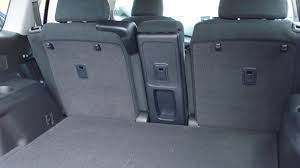

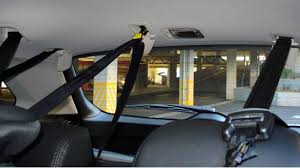
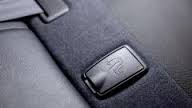
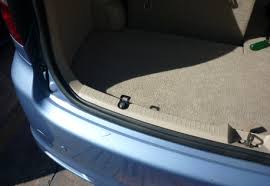
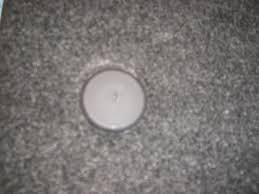
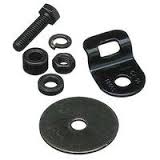
It was a night like any other, my children were in bed, I had finished my jobs for the night and I was sitting watching the late news. A story came on about the latest child dying in a hot car and at that moment something came over me. That was the moment I decided to create Check the back seat for me. I was overwhelmed by sadness for these parents that somehow ‘forgot’ their child was in the car and continued on with the day resulting in vehicular heat stroke and death. That was 8:30 at night, by 4:30 the next morning I had designed the products, researched statistics and I was determined to start a movement to stop these kids from dying. Like most people reading this article I too find it incredibly hard to believe that this could happen but it is happening and we must do something to prevent it or at least reduce the occurrence.
Our days are hectic, consisting of work, planning healthy meals and running the kids to all their activities. Some days it’s nonstop and can be overwhelming, we have all felt overwhelmed.
It’s not easy to admit this but by sharing this story I may be able to save children’s lives. It was a morning when my eldest son was 2 years old and my youngest was under a month old. My youngest had silent reflux for the first few months of his life and my eldest was teething. I had not slept well the night before and I was so rushed in the morning I had forgot to have breakfast, I think I was running on autopilot.
That day it took me more than an hour to get the boys into the car, with the youngest doing a number 3 right before we walked out the front door and my eldest was in a terrible mood, all three of us were. I put both children into the car and once arriving at a shopping centre took my 2 year old out of the car. My plan was to put him into the pram and put the baby in one of those pouches you strap to yourself. My 2 year old became very difficult and didn’t want to be buckled into his pram, it took several minutes to get him in, and he was struggling against me. It was hard work and I was already exhausted from the night before. All I wanted to do was get into the shops get the shopping done and get home. To add to this another car was parking in the next parking bay and was coming very close to us, I wanted to get out of there quick.
I pushed lock on the car remote and headed to the shopping centre entrance. I walked about 20 metres and as those auto doors began to slide open it clicked, I remembered the baby and we raced back to get him. I was shaking even though we had only travelled 20 metres. All the “what ifs” went through my head. It was a warm summer morning too, what if what if what if. I’m not a forgetful kind of person, my boys would tell you I am a pretty good mother and if you asked I would have said ‘No that would never happen to me”.
That was the first and only time but it could have ended in tragedy, I never forgot it and if I was wearing a Check the back seat for me Wristband or had the Heart Reminder Keyring on my car keys it wouldn’t have happened at all.
Ive learnt a lot since I started Check the back seat for me. For instance On a hot day a car can go from 30 degrees to 70 degrees within 5-10 minutes.
The NSW department of Community services created a document for the summer school holidays of 2011 and 2012. It states several interesting points and they are:
On a normal Australian summer day a parked car can be as much as 30-40 degrees hotter than the outside temperature. For example on a 30 degree day the temperature of inside the car can be as much as 70 degrees. If like me you attended school in Australia you would remember the 40 degree days where we felt like we were dying and the teachers would allow us to lie on the cool line to try to cool our little bodies down. I can’t even imagine what 70 degrees is like.
The document goes on to tell us that as the temperature rises children begin to develop heat stress (hyperthermia) and also to dehydrate. What can following the dehydration is seizures, stroke and ultimately death.
Children may also become distressed and try to get out of their restraint. If the harness on the restraint is loose, children are at risk of strangulation on the harness. So much can go wrong, its chilling to think about.
We can put a stop to this and the first and most important step is accepting that this could possibly happen to your family or a friends family. It’s a sensitive topic and it’s hard to stomach but it’s been proven that saying “this would never happen to me” does not prevent it from happening.
In Australia during the summer of 2014 the NRMA rescued 20% more children from hot cars than the summer of 2013. Our lives are busier than they ever have been before, there is so much required from us, both parents need to work to afford the rent or mortgage, we are often overwhelmed.
A recent case in Victoria saw a mother drive to the daycare centre to collect her child that she allegedly believed to have dropped her 22 month old son off at that morning. Upon entering the centre they made it clear to her that she in fact had NOT dropped the child off and when she returned to her car she found her son in the back seat. He had passed away. It’s alleged the mother had taken her other child to primary school and had gone about her daily chores not realizing she actually hadn’t dropped the toddler at daycare. Her boy had been left in the car and had died. I am 100 percent sure she didn’t do this on purpose (she was unable to be interviewed for several days after this happened) she simply forgot. Maybe she was stressed, maybe she was on autopilot, and maybe there were dramas in her life that had distracted her so much that it caused this to occur. I not suggesting I know this woman and how she thinks but I bet that if you spoke to her a year ago she may say that such a terrible accident could never happen to her.
I could go on with stories and statistics but Im sure you are understanding that this is happening a lot more than what we thought and the heat changes occur a lot faster than most of us thought too.
When an accident or death occurs in the work place there are then procedures and policies put into place to prevent these accidents from happening again.
Up until I created this product there was nothing available that looks great, is cheap, accessible to everyone and you don’t need expensive fancy equipment to make it work.
Now your Check the back seat for me safety pack is here, it’s available to everyone and affordable. What if this pack was the difference between life and death in your family? It’s a simple solution to a devastating accident that is happening more and more often in each passing year.
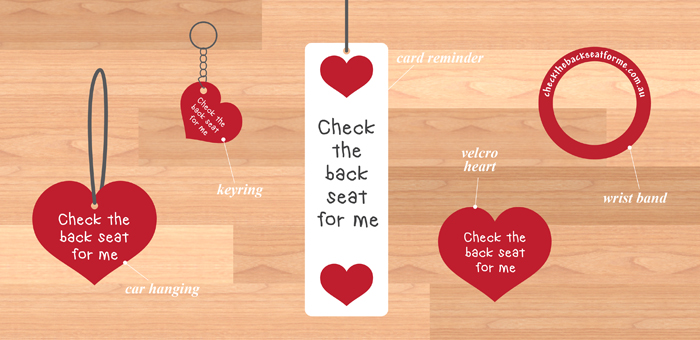
Our mission at Check the back seat for me is to prevent or at least dramatically reduce the amount of child deaths in hot cars. I want this product to go Australia wide then worldwide so we can start saving children’s lives now!
Well as you saw in the above story, I didn’t have much sleep the night before, I hadn’t had breakfast, my eldest was being very difficult and I was distracted by another car parking too close to my vehicle.
There are other situations that lead up to children being forgotten in vehicles.

A different parent/carer is asked to take a child in their vehicle when they usually don’t can result in the driver going onto autopilot, forgetting they have a child in the back of the car and continuing on to work as usual.
How many times have you arrived at a destination and not really been able to recall every part of the journey. Its not intentional, its an accident and without safety procedures in place, it IS happening. This product can help prevent this from happening to you.
One parent may believe that the other parent has taken the child inside after an outing, both parents are busy getting on with unpacking or juggling the other children. 5-10 passes and it can be too late.
So you are probably wonder how to use our pack and is it easy to use? Well read on and you will see what a simple, easy, life saving solution it is.
The idea is to leave the pack in the child seat, then place into the drivers seat to remind you to use an item from the pack.
After securing child with seatbelt return to your driver’s seat, choose the item you want to use and place it in the suggested locations inside same vehicle, as long as it is safe to do so. Easy!
The reason why there are five choices in the pack is that we recommend you use a different item each time so it stands out and your brain continue to notice it.
The Herald Sun recently reported that The State Government has promised to increase penalties for leaving children in hot cars, with fines up to $3700 and jail time increased from three months to six months. This is a step forward but I believe my product is a practical lifesaving alternative that can work right now. Whats the point in fining someone if they have already lost a child. Who knows, maybe I have already been able to save lives by having my Check the back seat for me Facebook page.
Dads, if you want to earn brownie points this would be a thoughtful Mother’s Day gift (from the kids) showing you are proactive in helping to prevent this devastating accident happening to your family.
Simply purchase the pack, leave a few of the items in each car and pull them out when routines change or when you are having ‘one of those days’. It’s also suggested that the Rear View Mirror Heart Reminder can remain on the mirror and as it swings it reminds.
To purchase your pack go to www.checkthebackseatforme.com.au or go onto our facebook page Check the back seat for me ‘like’ and click on Shop Now in the large picture at the top of the page. In the first week we sold over 70 packs and feedback is telling us that our pack is being purchased by one parent and being shared between all the cars in the family. Priced at $22.95 (including postage and handling) how can you go past this cheap and simple solution.
Written by Penny Arnold, Founder, Check the back seat for me.
Posted by admin in Babies 0-6 months, Pregnancy, Safety on April 1st, 2015
So you’ve just walked into a huge baby stuff emporium for the first time ever and one of the employees hands you a great little checklist that lists everything you’ll need for your new baby.
Don’t believe the hype! A great many items on that list just aren’t necessary and another 25% of it is stuff you’ll only need for a few months so we’d suggest you consider borrowing from a friend or hiring, and save your $ for the more expensive years to come.
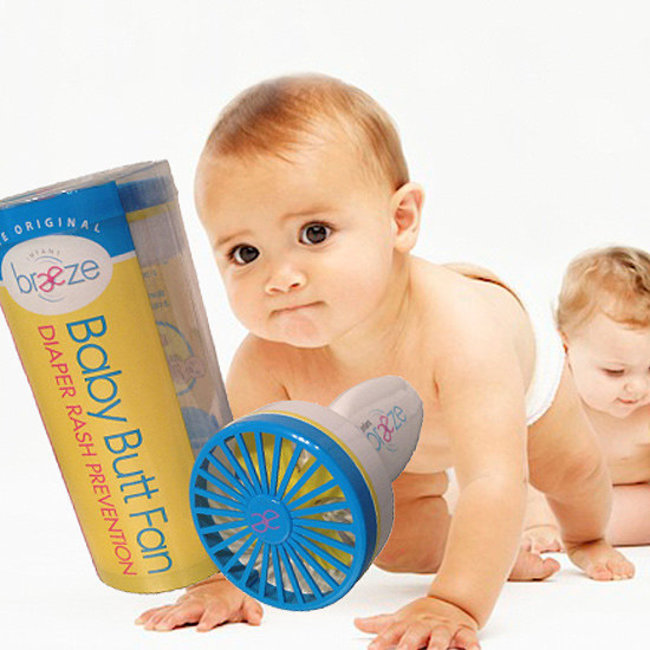
Baby Butt Fan – we’re not a Fan of the Baby Butt Fan
Posted by admin in Babies 0-6 months, Explore Sydney, General, How to, Safety, Travelling with kids on March 18th, 2015
Our good friends at Maxi-Cosi were the first infant car seat provider to offer ISOFIX-compatible infant car seats with the launch of its ISOGO range. ISOGO is an ISOFIX compatible system for Maxi-Cosi child restraints.
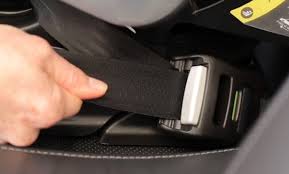
As experts in child mobility, Maxi-Cosi is an international leader in the production and testing of child restraint products. Maxi-Cosi’s ISOGO is a simple and user friendly latch system that enables parents and care givers to safely connect their Maxi-Cosi child restraints to their vehicle’s ISOFIX lower anchorages in a simple step. With its green and red indicators, the question of whether or not you’ve done it correctly is eliminated giving parents peace of mind that the installation has been done correctly at just a glance of the indicator.
With a staggering 88% of infant car seats not fitted correctly, Australian parents have been desperate for ISOFIX-compatible seats so this range has been very welcomed by our customers.
ISOFIX compatible systems must comply with the Australian/ New Zealand 1754 Standard. Seats that comply must be fitted with rigid or flexible lower attachment connectors as well as top tether straps. The dynamic testing required varies from country to country and therefore a child restraint that is purchased overseas is illegal and any insurance will be null and void in the event of an accident. The Australian/ New Zealand 1754 Standard is known to be the most stringent in the world.
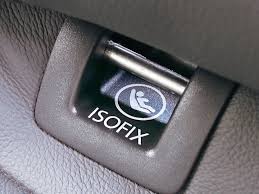
Designed to make fitting an infant car seat sercurely easier, ISOFIX is an international standardised fitting system for attaching infant car seats securely without the need for the vehicle lap sash seatbelt. Most modern cars sold in Australia offer ISOFIX mounting points, but if you’re not sure take a look at the base of your backseat in the gap between the base of the seat and the back of the seat. Generally there will be some writing saying ISOFIX above the mounting points; if in doubt, check with your local mechanic. See image below:
According to Maxi-Cosi, “fitting a Maxi-Cosi ISOGO car seat is easy. Simply click your ISOGO car seat into your car’s ISOFIX lower anchorage points and click the upper tether strap. You can then check the seat is correctly installed by making sure the harness tension colour indicator is green”.
“Our family is always on the go, so it is wonderful to finally have a car seat that?we can fit so quickly and be confident that it is properly fitted and secure,” says mother-of-two and Maxi-Cosi Ambassador, Rebecca Judd.
“Maxi-Cosi ISOGO has taken the guess work out of fitting our kids’ car seats, and we now have greater flexibility should grandparents or friends wish to borrow a car seat for a special day out”.
Maxi-Cosi ISOGO car seats and capsules are available for both hire and purchase on our site.
Posted by admin in Babies 0-6 months, Explore Sydney, Pregnancy, Safety, Travelling with kids on March 15th, 2015

Considering the wide range of baby capsules and carseats available for sale or hire can make it difficult to choose – do you go for a baby capsule or is a carseat a better option?
Although convertible carseats are just as safe as a baby capsule and you get more use out of them we’d suggest that a baby capsule has many benefits over a carseat that are worth considering before you make your final decision. Many parents find baby capsules a practical and easy alternative for the safe transport of their baby for the first 6 months or so.
We see many parents who come in and have a baby seat already installed in their car but have found that taking their baby in and out of the seat when they arrive at their destination often disturbs the baby’s sleep and unsettles them. Having a baby capsule means you can take your sleeping baby straight from the car without having to wake them to move them to the pram.
Of course, the most important reason to choose a baby capsule is to ensure the safety of your baby when travelling in the car. Baby capsules are suitable from newborn until six or twelve months depending on the product and the capsule you choose. They are engineered to cocoon your baby with their high side walls, ensuring your child is secured safely within the capsule using a five point harness that is easy to adjust.
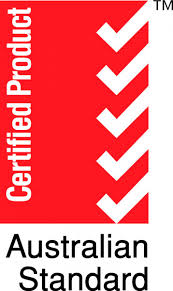
All our capsules for hire carry the Australia and New Zealand Standards AS/NZS 1754 sticker so you can feel confident the capsule meets Australia and New Zealand standards. Likewise, it is also important to make sure your capsule is properly fitted to your vehicle to maximise the safety benefits and minimise the risk of serious injury or death in the event of an accident. That’s why we offer free professional installation with all of our hire baby capsules.
Another major benefit of hiring your baby capsule is the ability to move the capsule in and out of the car while the baby is safely tucked inside. A base is installed into your car that the capsule clicks into, so you can quickly and easily move a sleeping child in and out of the car without disturbing the baby or playing around with straps. Baby capsules are generally quite light and fitted with a handle for easy manoeuvring. You can also hire pram adaptors so that you can drop your hire baby capsule straight onto your pram with just one click giving you a great deal of flexibility and freedom.
This freedom to effortlessly move a sleeping baby is particularly precious in these first months together with your baby. So, here at Rock-A-Bye Baby Hire we have a range of compatible prams and adaptors for hire that our capsules for hire can click into, allowing you to move your sleeping baby from car to pram and back again without disturbing their sleep.
Click here for our baby capsules for hire in Sydney range.

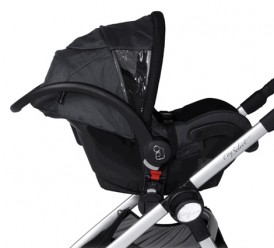
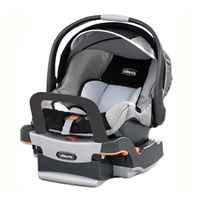

Click here to view our prams for hire in Sydney.
Our travel system (capsule and pram hire) range is here.
Posted by admin in Babies 6 months - 4 years, Safety, Travelling with kids on October 14th, 2014
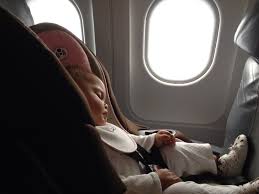
Some airlines that operate under the Civil Aviation Safety Authority (CASA) will accept child seats on their aircraft that are compliant with the Australian Standard. Currently we understand that the companies that do include Qantas, Jetstar, Virgin Blue, and the regional airlines. These airlines should accept your restraint without question although some customers have reported that they have had to have the seat to be checked before the flight for fit the day before. The width of the child restraint may be more of a concern for smaller aircraft used in regional services such as Rex etc. It is best to always check with the airline some time before you’re due to fly.
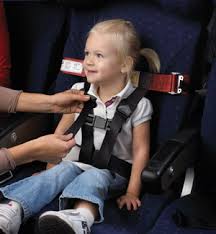
Unlike seats made in America, Australian standard restraints do not have a sticker or indicator that says “Suitable for use in aircraft” as our standard does not have this requirement. Your Airline may look for this statement as it is accepted by the USA Federal Aviation Authority, however, all airlines should accept the CASA acceptance of Australian child restraints. Sometimes however, the staff onboard the aircraft are not aware of this so again its really worth the call before you fly to check.
Please note: The tether or upper anchorage strap does not need to be attached although Qantas do have dedicated seats where child restraints can be fitted and the tether or upper anchorage strap connected to straps fitted to the aircraft. This seat must be requested on booking.
You will need to book and pay for a seat to use your child restraint when flying and this can be arranged at the time of booking or through your travel agent.
Airlines do provide an additional strap for very young children and babies and that uses the parent’s seat belt and does not require an extra seating position so if you don’t wish to take your carseat with you this is always an option, or you can hire a CARES Harness for the trip.
Some airlines do provide child restraints for use in their aircraft. Again, we suggest you check with your travel agent or with the Airline at the time of booking.
Safe travels!
Hiring a TENS for your baby’s birth you can achieve an easier, less painful labour.
TENS is short for Transcutaneous Electrical Nerve Stimulation. A TENS machine is generally a battery powered unit that emits little pulses of electrical energy via electrodes or sticky pads that are placed on the skin of the person using the machine.
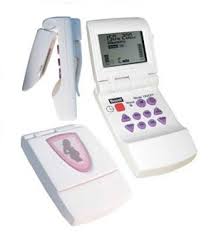
TENS works bysending light electrical pulses of electricity into the body through the skin. Your body reacts to the impulses by releasing its own pain killing chemicals (endorphins).
The level of pain relief obtained depends on the individual. Some clients have reported that they required no other pain relief during their labours.
Unlike many TENS machines, our Obstar Obstetric TENS machine is designed specifically for use in childbirth. Its hugely popular and has a range of easy features:
We recommend you arrange to have the hire TENS machine delivered at least 2 weeks before your baby is set to arrive.
We suggest you start using your obstetric TENS unit as early as you can once labour begins, to allow time for your body’s endorphins to rise and counteract the pain.
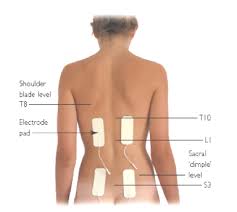
For effective management of labour pain, place 2 electrodes just below your bra line; the other 2 electrodes should be placed just above the top of your underpants on either side of the spine. See image below.
Yes, you can try it before labour on your forearm to feel the different pulses. See the instruction book included in your hire pack for more details.
Yes, you can still use heat packs, massage, gas or pethidine. You can not use TENS if you are in the shower or bath.
We also sell brand new Obstar Obstetric TENS units and spare electrode pads, just have a look at our Buy page.
To book your hire unit you can pop one in your hire cart here: https://www.rockabyebabyhire.com.au/shop/tens-machines/
Or just email Danni at jess@rockabyebabyhire.com.au or call 02 9589 4942 and we can reserve one for you and send it to you ready for your baby’s birth.
Posted by admin in Babies 0-6 months, Explore Sydney, General, Safety on July 8th, 2014
When you’re newly pregnant and considering setting up your nursery, its natural to want to have the best of everything for your baby. But these days, with $2,000+ prams and $1,500 beds, purchasing all this brand new just doesn’t make sense. This is where we step in, enabling families to hire rather than buy their nursery equipment. Our motto is “Why buy when you can hire?” but what does that really mean? What are the average savings on hiring –v- buying? We’ve prepared a comparison table that contrasts the cost of hiring your nursery equipment –v- paying RRP, keeping in mind that these are all items that are only required for a limited period in your nursery.
*All hire costs are based on a 6 month hire except the breastpump in this table which we’ve estimated will be hired for 4 weeks.
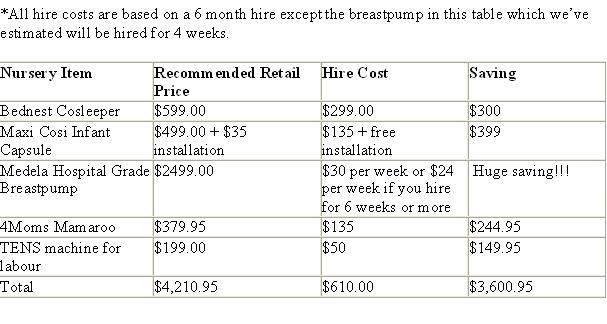

All up, a couple who choose to hire just these few nursery items that are really only required for such a limited amount of time in your baby’s early days could save themselves over 80% of the retail cost of the very same items. Its quite a big saving and something to think about when doing your budgeting.
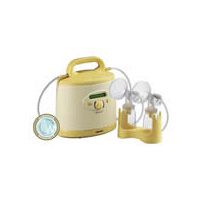
Hiring is also a good way to try products you’re not sure about, before you buy and are then stuck with them sitting collecting dust in the garage or waiting for the day you can get the camera out, take the pictures, then list it all on Ebay and hope you can recoup at least a bit of the outlay.
All of our baby equipment for hire is purchased brand new direct from the manufacturer or importer, every piece is carefully cleaned and safety checked before each hire and is regularly replaced to maintain our exacting standards. You’re not going to lose out on quality just because you hire – we have a large range of premium, luxury baby products from brands such as Leander, Bugaboo, Seed Organics, Baby Jogger, Maxi Cosi, 4Moms and many more.
Every member of our staff is a qualified and accredited Infant Restraint Fitter and we offer complimentary fitting of all hired infant restraints so that you can rest assured that your baby’s safety is our priority. All hire baby capsules come with free professional installation.
Hiring baby equipment is also great for holidays, whether for yourself or for relatives or friends who are coming to visit. It can greatly reduce stress, save you those exorbitant excess baggage fees (without even mentioning the potential for serious damage to your baby equipment when its in transit). Using our Sydney Airport Concierge Service means you can have everything ready and waiting in your hire car by the time you arrive.

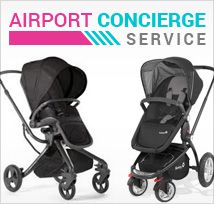
Call us today on 9589 4942 for a quote on your nursery needs – we can create a discounted package deal to suit any family or email through your wish list to Danni at jess@rockabyebabyhire.com.au.

The road rules require a child aged 7 years to under 16 years of age to travel in either an approved booster seat or an adult seatbelt. The type of restraint will depend on the child’s size. Drivers and passengers 16 years and over are required to travel in an adult seatbelt.
Your child should continue using his or her booster seat until they have outgrown it. An adult lap-sash seatbelt is designed for people with a minimum height of about 145 cm and the average child will reach this height between 10 to 12 years of age.
Children who are not yet tall enough to use an adult seatbelt tend to slump into the vehicle seat so that their legs bend at the seat edge. This means the lap part of the seatbelt is positioned too high on their stomach and they are at risk of more serious injury in a crash.
Lap-sash seatbelts offer greater protection to passengers than lap-only seatbelts, but they must fit correctly. This means the lap part of the seatbelt is positioned low over the hip and the sash part of the seatbelt sits in the middle of the shoulder and does not touch the neck.
If your vehicle has a lap-only seatbelt replace this, if possible, with a lap-sash seatbelt.
There is a simple five step test to help you decide whether or not your older child is ready to use an adult seatbelt in the car.
The 5 Step Test was sourced from the National Child Restraint Guidelines. For more information and to access the full guidelines, please visit the Kidsafe website
If you aren’t sure or have more questions around kids and cars, please feel free to call us anytime 9589 4942 we’d be happy to talk to you. Don’t just guess – your child’s safety depends on you.
Posted by admin in Babies 0-6 months, Babies 6 months - 4 years, How to, Safety on March 19th, 2014
All child restraints in Australia that comply with the Australian Standard require the restraint to be fixed to the vehicle at two separate points – using the car seatbelt and a top tether which anchors to to a child restraint anchor point in the vehicle. You can install a car seat yourself, however research shows that a large proportion of restraints are incorrectly fitted, putting children at risk of serious injury and death.
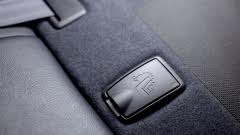
A 2009 Monash study of almost 2000 car journeys involving children in restraint seats found that children had been incorrectly restrained up to 88 per cent of the time, depending on the restraint type; 88 per cent of forward-facing seats were wrongly installed, followed by infant seats (67 per cent) and booster seats (63 per cent).
The quick answer is No. It really depends on when your car was manufactured as to whether or not your vehicle has an anchor fitting point.
Sometimes its very easy to find an anchor point as they will have the bolt already in place and many modern vehicles have a cover over the point with this symbol identifying it as such.
Where there is no anchor bolt present there will sometimes be just a threaded hole that needs to have the anchor bolt and fitting installed. They can be located in a variety of places and could be hidden by a plug or cover. Anchor points could be located in the parcel shelf, in the back of the rear seat, in the boot floor or even in the roof behind the rear seat. If in doubt check the location of the anchor points in the vehicle’s handbook.
The anchor bolts used for child restraints are of a particular size and incorporate a thread that will not be used anywhere else in the area of the anchor points. If the anchor bolt easily screws into the point you have located, it will be the anchor point.
You will need: An anchor kit which includes the anchor bolt, washer, spacers, and anchor bracket that will be used to anchor the child restraint to the vehicle.
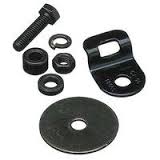
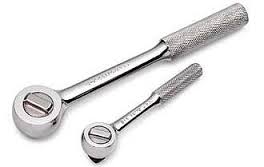
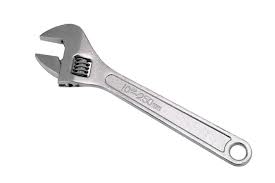
All the staff employed by Rockabye Baby Equipment Hire are accredited restraint fitters and we offer a professional restraint fitting service – just click here to make your booking or call us direct on 02 95994942 and we can discuss your requirements.
Posted by admin in Babies 0-6 months, Babies 6 months - 4 years, General, Safety on February 19th, 2014
By law, babies can legally face forward in the car from 6 months of age and baby capsules are generally used to 6 months of age, so many parents presume that baby can go straight to a forward facing carseat once they turn 6 months old. But is this really the safest option?
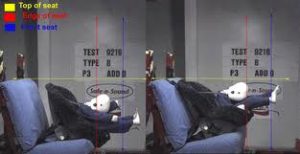
Safe N Sound crash testing
According to Kidsafe Australia, more children die from injuries sustained by or in motor vehicles than from cancer and diseases of the nervous system combined.
Many parents turn their babies forward-facing at 6 months because the law says they can, unaware that this could put their baby at risk of serious neck, head and internal injuries in a collision. In a front-on collision, your baby’s head will snap forward abruptly which can cause considerable, sometimes permanent damage to their spine. It is not just a matter of head strength. Just because your baby holds their head up well doesn’t mean they are strong enough not to suffer this kind of injury.
Babies aren’t small adults and they’re not built the same way as an adult so the risk of serious injury in a car crash when they are forward facing is very real. Babies have surprisingly heavy heads in relation to their bodies: the average nine month old child’s head makes up 25% of his body weight, while an adult’s head only makes up 6% of its body weight. In a forward facing accident the body is restrained by the inbuilt harness, but your baby’s head is not so the force of the accident will snap their head and neck forward quite sharply, even in a minor accident.
To see the difference in an accident between rear and forward facing you might like to watch this video:
Rear -v- forward facing video
We suggest to our customers that they guided by the baby’s weight rather than his or her age. If your child is six months old but only weighs 8.5kg, he or she can and should stay in their rear-facing restraint until she weighs enough to move to the next stage seat. There are many affordable products on the market today that will allow the average child to rear face beyond 6 months old.
When considering whether to move your baby to a forward facing restraint, it’s important to consider safety but also the needs of your family. Some parents report that their babies are very unhappy in the rear-facing position and this does need to be taken into account if its so distracting you can’t drive!